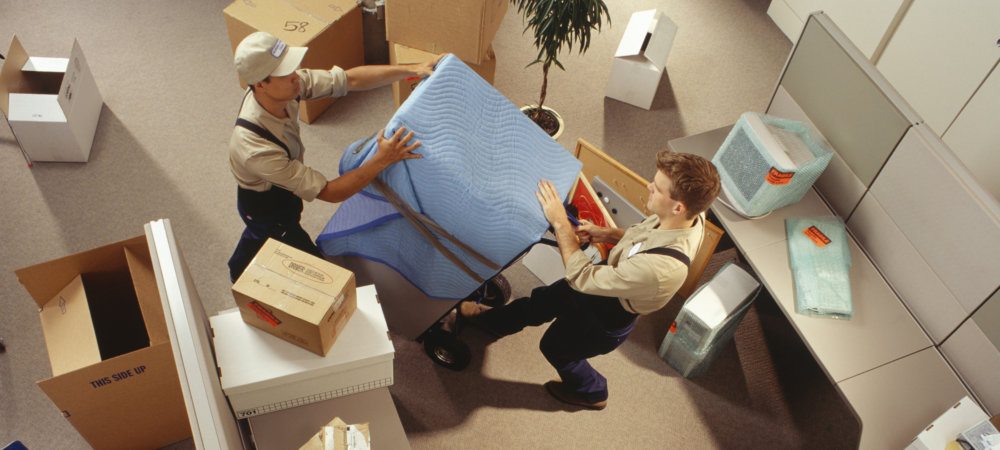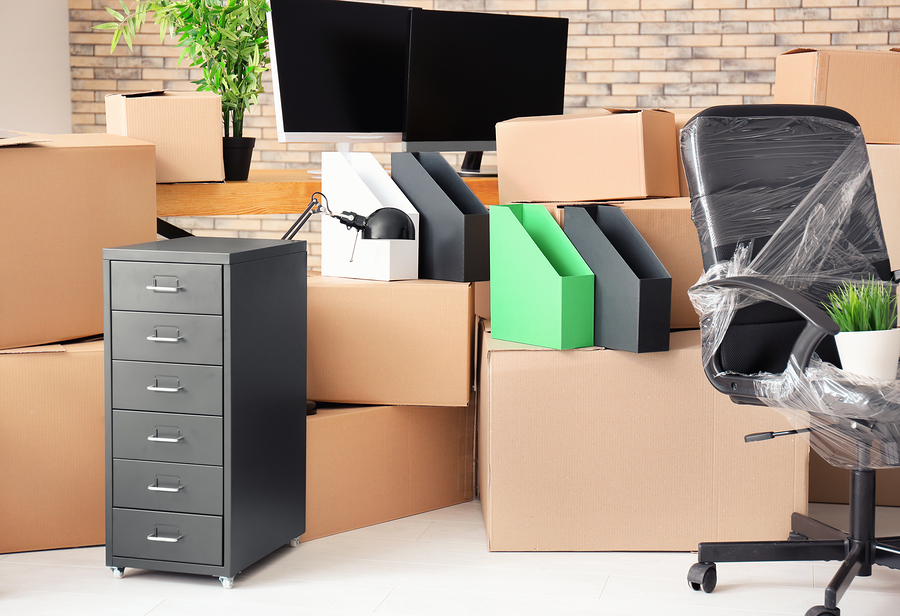Moving to a new office space is just as involved, if not more so, a process as moving to a new house. You’ve got big, bulky furniture, difficult to pack electronics and multiple rooms and desks worth of accumulated knick-knacks to get packed up. All of this, and a minimal amount of time to get it done (it’s not as if you can afford to shut the business down for a week or two to get everything organized). Office relocation is a hectic process, regardless of the size of your company. Let’s look at some tips to help navigate the choppy waters ahead.
1. Plan Early.
‘Winging it’ really is not an option when it comes to successful office relocation. You are better off starting the planning process early, deciding who will do what and when it needs to be done by.
Otherwise, you’ll find yourself scrambling at the last minute, spending all night trying to figure out how to move two dozen massive printers and tossing important documents into boxes indiscriminately. Imagine the headache sorting that mess out will be later on. On top of planning the move, you also need to be figuring out how you will be setting everything up at your new location. Last but not least, prepare your moving budget – it’s essential to know how much you will be spending.
2. Research the best moving company.
It’s always recommended that you look around and get a quote from at least three professional moving companies before booking your move. However, because an office move can get very expensive, very fast, you’re better off looking at a couple more than that.
If you have the budget for it, plan to hire a full service moving company like Vic Leahy Removals & Storage — they’ll do all the packing for you, as well as the loading, unloading, and unpacking. To get the most accurate quote possible, have a representative from each company come to your office and see the scope of the work. With jobs like this, it’s not enough to describe what needs to be done over the phone.

3. Tell your staff to take care of their desks.
While you may be having a moving company come in to take care of the big stuff, it will still be a major help to have everyone responsible for their own desk space. You may need to just give your team a couple of hours of time off on the day before the move to get their desks in order.
4. Don’t forget I.T.
One of the most significant complications in moving to a new office space is disconnecting and reconnecting all of your techs. As soon as you know the date of your move, have your I.T. department draft a plan for transferring all of your office’s technical equipment, including computers, servers, and phones, as well as your data and internet plans. This is a big job and one that you can’t outsource to the movers, so it’s critical that your team gets to work on it as early as possible.
5. Make sure you’re up to date on the new building rules.
Unless your company owns the building you are moving out of or in to, you will need to get a full breakdown of all building rules around relocating. Get these rules from building management as early as you can, since it will dictate the logistics of moving day.
6. Make sure you update your address.
It’s better to start updating documents with your new address earlier rather than later. Place your orders for new business cards, letterhead, envelopes, return labels, etc. right when you know your new address. Make sure to update your clients as well. It’s much better to have all of your updated documents on hand before your move than to risk going days or weeks without them in your new space.

7. Label your boxes properly
Labeling your boxes is essential in all moves, but especially when you’re moving to a new office. To keep operations running during and after the move, you’ll want to label every single box carefully. That way, you’re not looking for things like more printer paper or toner only when you desperately need them.
8. Make sure everything will fit
Instead of wasting time, energy, and money on transporting items that aren’t going to work in your new office space, get the dimensions of your most substantial items and compare them to the measurements of your next location. Hopefully, you’ve chosen a new office where you can fit in your existing furniture and tech, but if you haven’t, you’ll want to know that before moving in—not after.
9. Try to move some non-essentials on your own first
Simplify moving day by transporting the little stuff as you can, provided there’s an overlap of timing with your new lease. If this is not feasible, check with your moving company whether they offer storage space, so you can be sure your items are safe.
10. Celebrate your new digs
Office relocation is stressful for everyone, including your employees. As a “thank you” for everyone’s cooperation in making it happen and as a way to celebrate your new space, budget in a small party for after the move.


